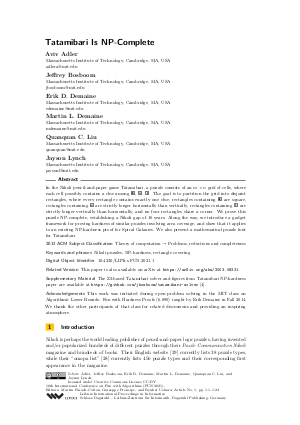LIPIcs.FUN.2021.1.pdf
- Filesize: 1.2 MB
- 24 pages

 Creative Commons Attribution 3.0 Unported license
Creative Commons Attribution 3.0 Unported license












Feedback for Dagstuhl Publishing